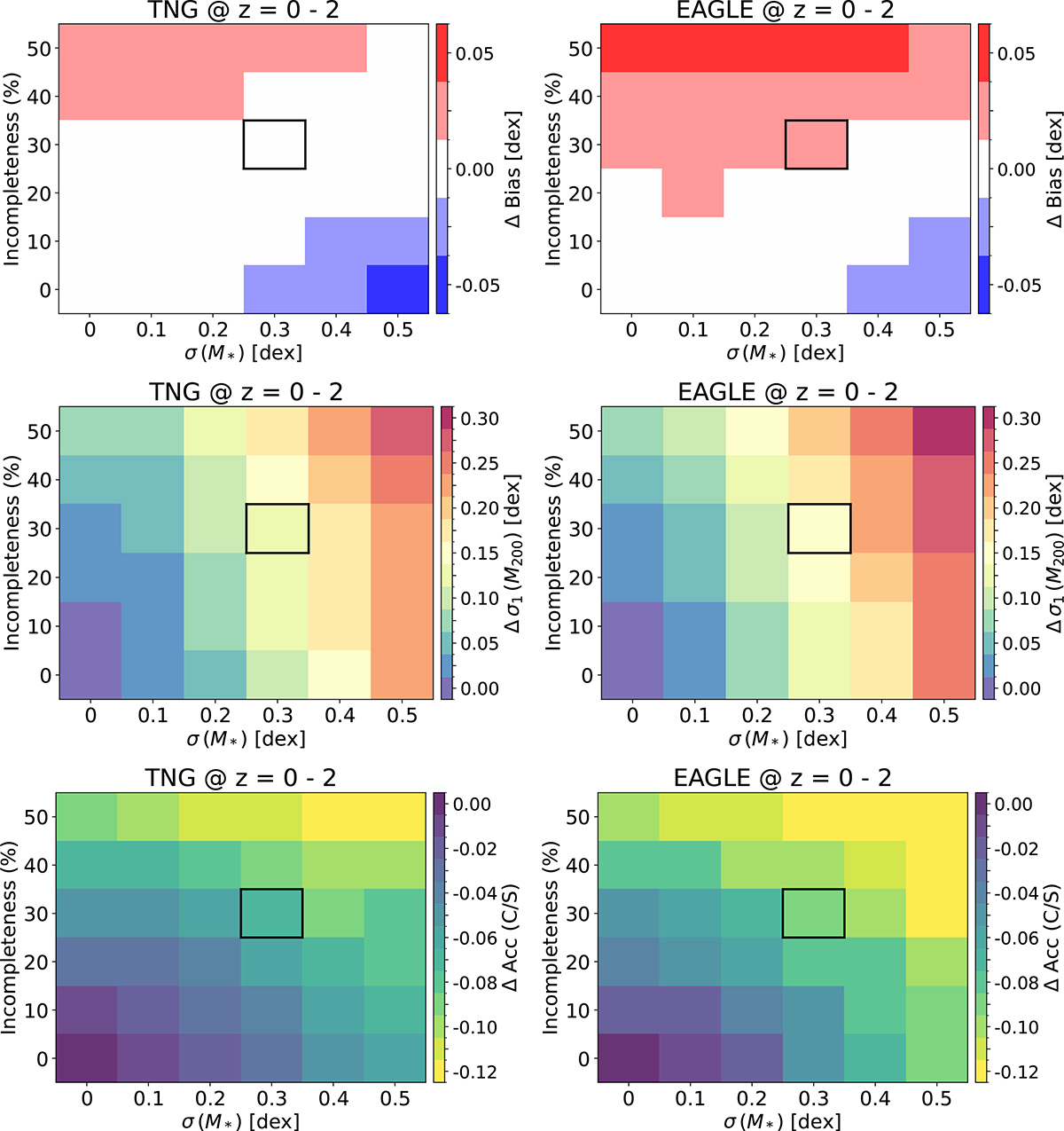Fig. 12.

Download original image
Halo recovery performance from DfL as a function of spectroscopic incompleteness and stellar mass uncertainty. The left column shows results for the TNG simulation and the right column shows results for the EAGLE simulation. The top row shows the systematic shift in bias of halo mass recovery (Δ Bias), the middle row shows the systematic shift in statistical uncertainty of halo mass recovery (Δσ1(M200)), and the bottom row shows the systematic shift in central – satellite classification accuracy (Δ Acc(C/S)). These statistics are all calculated as a function of increasing stellar mass uncertainty and survey incompleteness, relative to the case of a complete sample with zero stellar mass uncertainty. Hence, this figure enables one to ascertain how these two critical observational limitations will impact the output halo properties from DfL under realistic observational conditions. The expected survey incompleteness and stellar mass uncertainty of MOONRISE is indicated by a black box on each grid. We expect DfL run on MOONRISE not to incur increased bias, to have increased statistical uncertainty of ∼0.15 dex, and to have decreased accuracy in central satellite classification of 5–8% (dependent on simulation). These values are measured relative to the case of running on a complete observational spectroscopic sample, with perfect knowledge of stellar masses.
Current usage metrics show cumulative count of Article Views (full-text article views including HTML views, PDF and ePub downloads, according to the available data) and Abstracts Views on Vision4Press platform.
Data correspond to usage on the plateform after 2015. The current usage metrics is available 48-96 hours after online publication and is updated daily on week days.
Initial download of the metrics may take a while.


